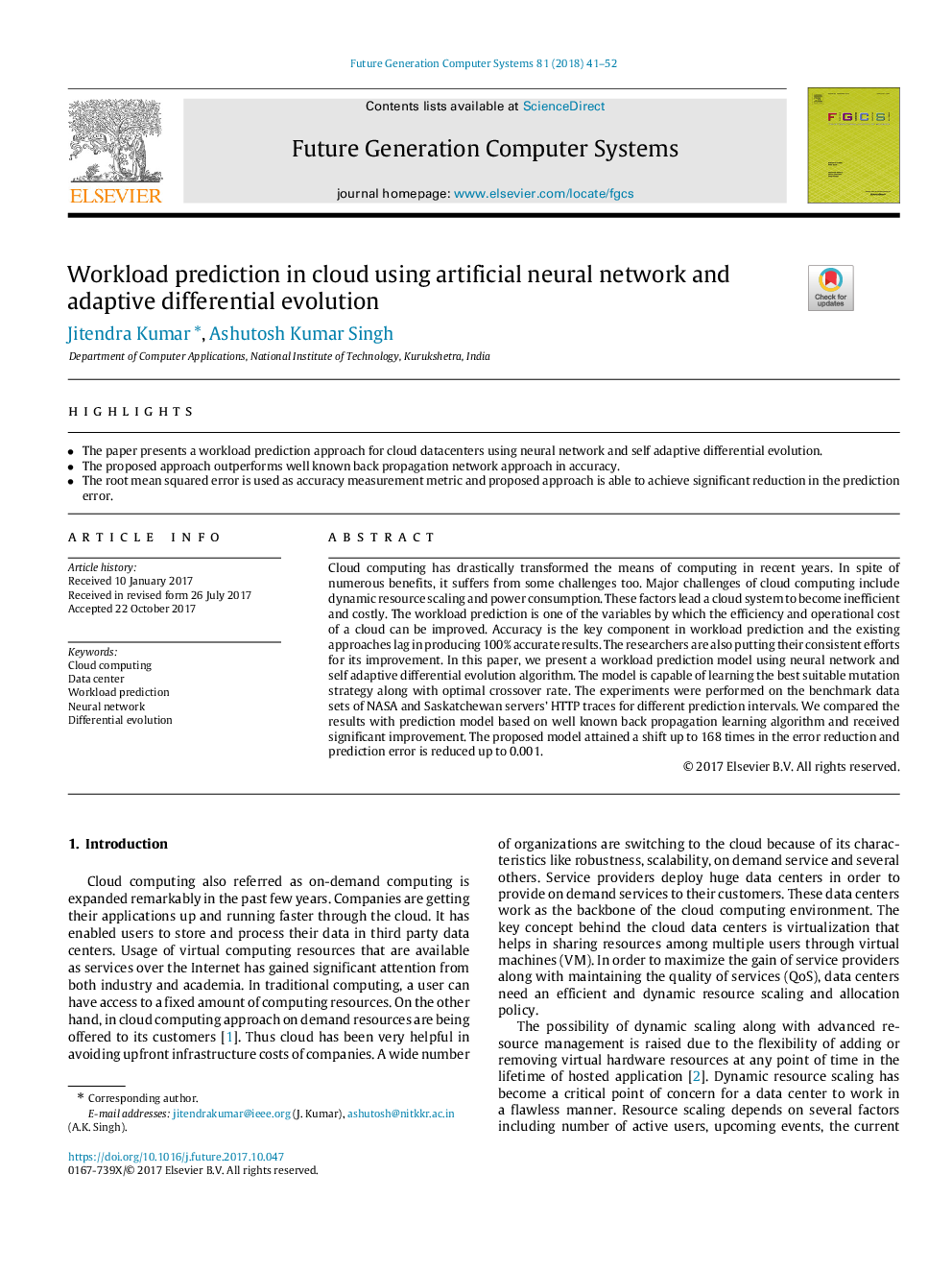| Article ID | Journal | Published Year | Pages | File Type |
|---|---|---|---|---|
| 6873254 | Future Generation Computer Systems | 2018 | 12 Pages |
Abstract
Cloud computing has drastically transformed the means of computing in recent years. In spite of numerous benefits, it suffers from some challenges too. Major challenges of cloud computing include dynamic resource scaling and power consumption. These factors lead a cloud system to become inefficient and costly. The workload prediction is one of the variables by which the efficiency and operational cost of a cloud can be improved. Accuracy is the key component in workload prediction and the existing approaches lag in producing 100% accurate results. The researchers are also putting their consistent efforts for its improvement. In this paper, we present a workload prediction model using neural network and self adaptive differential evolution algorithm. The model is capable of learning the best suitable mutation strategy along with optimal crossover rate. The experiments were performed on the benchmark data sets of NASA and Saskatchewan servers' HTTP traces for different prediction intervals. We compared the results with prediction model based on well known back propagation learning algorithm and received significant improvement. The proposed model attained a shift up to 168 times in the error reduction and prediction error is reduced up to 0.001.
Related Topics
Physical Sciences and Engineering
Computer Science
Computational Theory and Mathematics
Authors
Jitendra Kumar, Ashutosh Kumar Singh,
